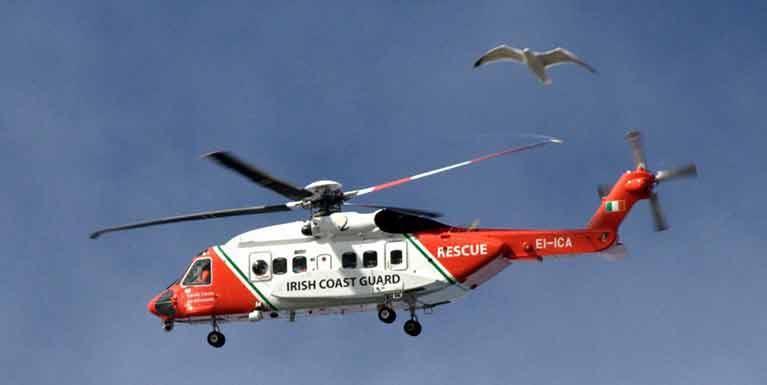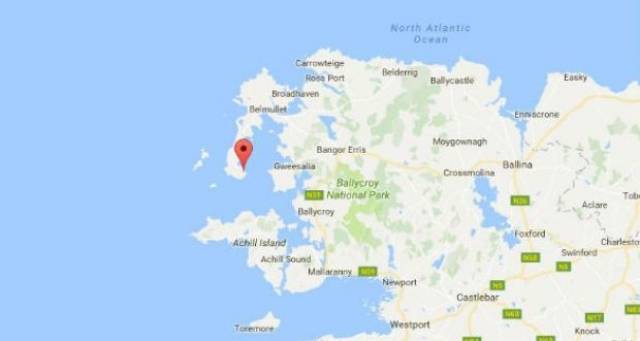A major sea search is ongoing off the county Mayo coast approximately six miles west of Blacksod this morning. At approximately 1am this morning contact was lost with a Coast Guard SAR Helicopter off the West Coast of Ireland during a rescue mission.
The Coast Guard has confirmed that there has been an incident involving one of its Search and Rescue (SAR) Helicopters. Four crew are onboard.
SAR Helicopters from Sligo and Shannon are on scene along with the Air Corps Casa. Ballyglass and Achill all weather RNLI lifeboats (ALBs) are on scene along with five local fishing vessels.
Minister for Transport, Tourism and Sport, Shane Ross T.D. expressed deep concern at the news.
 A Coast Guard Helicopter is missing off the West Coast. Photo: Twitter
A Coast Guard Helicopter is missing off the West Coast. Photo: Twitter
The Sligo based Coast Guard helicopter R118 completed an early morning medical evacuation (medevac) of a crewman requiring urgent medical attention from a UK registered fishing vessel approximately 150 miles west of Eagle Island in County Mayo. Owing to the distance involved safety and communication support, known as Top Cover, was provided by the second Coast Guard helicopter, the Dublin based R116.
The search operation is being coordinated by the Coast Guard Rescue Coordination Centre in Malin Head. Both helicopters refuelled at Blacksod prior to transiting to the scene.
Minister Ross said; “As the search for the Dublin based helicopter R116 is currently underway I would like to express my sincere support and sympathies for all those involved, particularly those family members who are awaiting news of their loved ones.
This is an extremely difficult time for all concerned. As we await further information I would like to appeal for space to be given to the relevant professionals involved in the search operation to complete their work. Once again, I send my utmost support to all those affected.”
Rescue 115 returning with original casualty before returning to search for #Rescue116 pic.twitter.com/dn8MxREMRd
— Fergus Sweeney (@FergusMaSuibhne) March 14, 2017
UPDATE at 0920: One Taken From Scene As Search Continues For Missing Coastguard Crew Off Mayo






























































